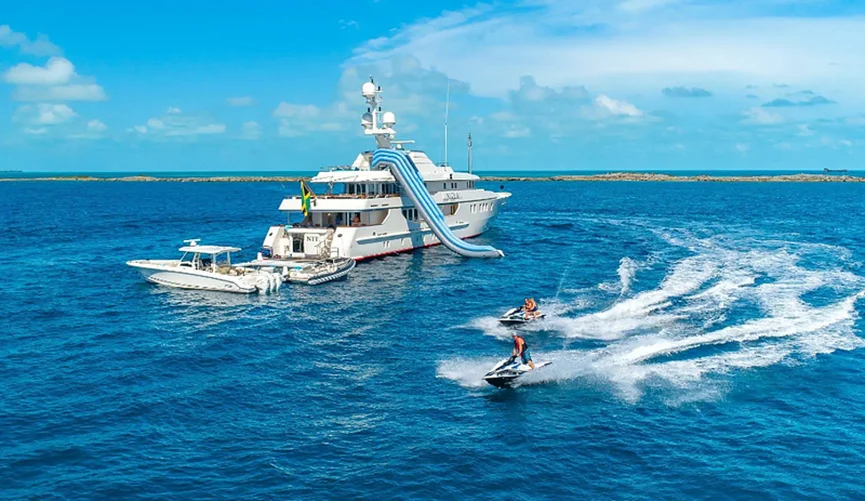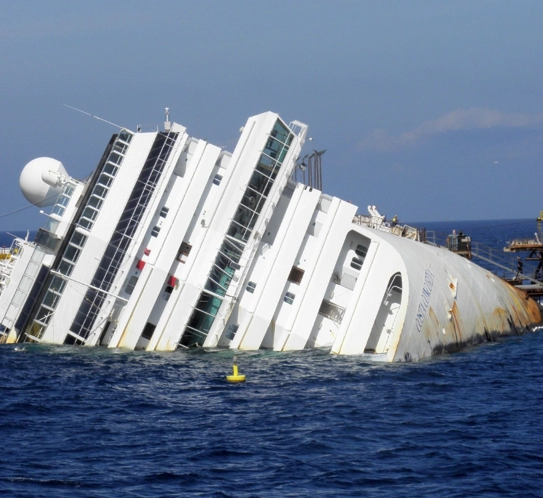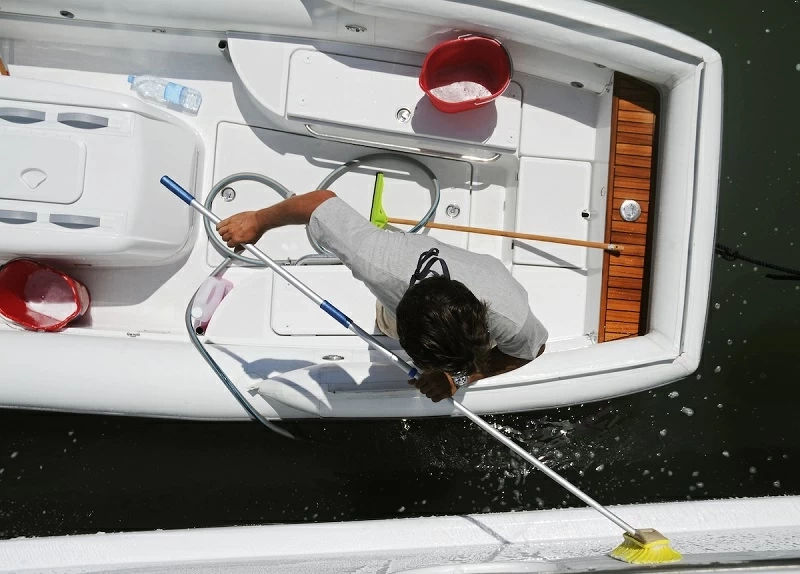“How do i sell my yacht” When faced with this question, nearly every owner first grapples with the same dilemma: “What is my yacht worth?” In reality, resale value is influenced by multiple factors, including age, operating hours, and maintenance records. This article breaks down eight key factors to help sellers make informed decisions regarding pricing, presentation, and sales—maximizing their return on investment.
Table of Contents:
Vessel Age and Operating Hours: A More Critical Depreciation Indicator for Yachts Than Car Mileage
Brand and Build Quality: Key Determinants of Resale Value
Maintenance Records and Condition: The Hard Currency Buyers Value Most
Accident History and Repair Reports: How Hidden Risks Drive Down Resale Prices
Technical Specifications and Equipment Upgrades: Outdated Electronics Can Immediately Depreciate Value by 20%
Exterior and Interior Condition: First Impressions Determine Premium Pricing Potential
Clear Title and Complete Documentation: The Passport to Buyer Confidence and Higher Offers
Market Supply/Demand and Economic Cycles: Hidden Techniques to Sell for 10% More by Timing the Market Right
Summary
 Vessel Age and Operating Hours: A More Critical Depreciation Indicator for Yachts Than Car Mileage:
Vessel Age and Operating Hours: A More Critical Depreciation Indicator for Yachts Than Car Mileage:
Boat age and operating hours are the most straightforward metrics for assessing yacht value and remain key concerns for buyers. I once assisted a client selling a five-year-old yacht in pristine condition, yet its engine had logged nearly 1,500 operating hours. Despite its young age, the high operating hours accelerated wear on critical components and maintenance costs, diminishing its market appeal.
Yatco's Understanding Yacht Depreciation notes: Annual depreciation rates typically range between 10%-20%, while high operating hours can significantly accelerate depreciation. Spinergie's Impact of Vessel Age on PSV and AHTS Utilization similarly demonstrates that as vessels age, equipment deterioration drives up maintenance costs while diminishing safety and market appeal.
Table: Impact of Vessel Age and Utilization Intensity on Yacht Residual Value:
| Vessel age / Hours of operation | Low usage (<500 hours) | Average usage (500–1000 hours) | High usage (>1000 hours) |
| 0–5 years | Depreciation rate: ~10% Residual value: ~80% |
Depreciation rate: ~15% Residual value: ~70% |
Depreciation rate: ≥20% Residual value: ≤60% |
| 5–10 years | Depreciation rate: ~12% Residual value: ~65% |
Depreciation rate: ~18% Residual value: ~55% |
Depreciation rate: ≥25% Residual value: ≤40% |
| Over 10 years | Depreciation rate: ~15% Residual value: ~50% |
Depreciation rate: ~22% Residual value: ~35% |
Depreciation rate: ≥30% Residual value: ≤20% |
The combination of vessel age and operating hours is key to assessing long-term value. Understanding their impact on depreciation and market appeal enables you to price and prepare your yacht more effectively.
 Brand and Build Quality: Key Determinants of Resale Value:
Brand and Build Quality: Key Determinants of Resale Value:
After establishing the base value, brand reputation and build quality are key factors influencing resale prices. Premium brands such as Feadship and Azimut typically command higher values in the pre-owned yacht market compared to other comparable brands, as they represent superior craftsmanship, stringent quality control, and long-term reliability.
According to Boat International sales data, the average resale price for pre-owned yachts is approximately €7.9 million (about $8.4 million), though prices range from $1.5 million for smaller vessels to $600 million for superyachts. Taking Feadship as an example, its pre-owned retention rate typically reaches 70%-80% of the original price, significantly exceeding the industry average.
Global Yacht Brand Premium and Resale Value Comparison Table:
| Brand Tiering | Representative Brands | Premium Rate* | Resale Value Retention Rate* |
| Ultra-Luxury | Riva, Feadship | +50-150% | 70-80% |
| Premium Italian | Ferretti, Azimut | +20-50% | 65-75% |
| British Luxury | Princess, Sunseeker | +30-60% | 65-70% |
| French Mid-to-High-End | Beneteau, Prestige | +10-30% | 55-65% |
| American Sportswear | Viking,Hatteras | +15-40% | 60-75% |
| Asian Value-for-Money | Yamaha | Baseline | 45-55% |
For sellers, choosing a reputable brand when initially purchasing a new yacht not only ensures a smooth resale process but also yields higher returns in the future.
 Maintenance Records and Condition: The Hard Currency Buyers Value Most:
Maintenance Records and Condition: The Hard Currency Buyers Value Most:
Even with a renowned brand and ideal age, a yacht's value can be significantly diminished if maintenance records are incomplete or the vessel's condition is subpar. Galati Yachts' article Routine Yacht Maintenance & the Importance of Records highlights that a yacht's maintenance records significantly impact its market appeal, particularly regarding the upkeep of critical components. Therefore, I recommend reading How to Maintain Your Yacht's Propulsion System: Engine Maintenance and Common Troubleshooting, then taking action to help extend your yacht's lifespan.
Reviewing detailed maintenance records and a yacht survey are crucial steps in ensuring a yacht's sound condition. Maintaining excellent vessel condition and providing transparent maintenance records, with a marine surveyor's verification, not only enhances a yacht's market value but also increases its appeal during resale.
 Accident History and Repair Reports: How Hidden Risks Drive Down Resale Prices:
Accident History and Repair Reports: How Hidden Risks Drive Down Resale Prices:
Beyond the vessel's physical condition, a yacht's accident history and repair records are critical factors for potential buyers. Any incident involving the hull structure or critical systems diminishes purchasing interest and directly impacts resale value. Bluewater Yacht Sales' professional journal OnBoard explicitly states: “A vessel's background significantly influences its valuation, particularly when major damage events are involved.”
I once handled a yacht that had suffered a severe collision. Although repairs were completed to standard, the lack of detailed documentation still caused buyer concerns, resulting in a price below expectations. Another yacht with frequent repair history was also deemed high-risk due to its past, ultimately leading to a significant price reduction.
Have you ever wondered how many yachts are there in the world? Precisely because of their sheer volume, the secondary market inevitably contains numerous high-risk vessels. Sellers should ensure accident histories and maintenance records are transparent and complete. Providing detailed repair logs and professional certifications can bolster buyer confidence and minimize price discounts.
 Technical Specifications and Equipment Upgrades: Outdated Electronics Can Immediately Depreciate Value by 20%:
Technical Specifications and Equipment Upgrades: Outdated Electronics Can Immediately Depreciate Value by 20%:
Once foundational conditions stabilize, technical configuration and equipment upgrades become key differentiators in competitive advantage. Outdated electronic systems directly impact resale value. Novelli Yachts notes in its professional article “Negotiation Techniques with Yacht Brokers”: “Updating electronics and performing minor repairs can enhance trade-in value.” Similarly, MPI states in “How Modern Electronics Give Your Yacht a Fresh Look”: “Equipment over three years old may miss out on performance and comfort enhancements.” Therefore, sellers should regularly upgrade key systems (multifunction displays, modern radar/sonar, entertainment systems, and digital control systems), document usage history, and highlight modern configurations in sales materials to build buyer confidence and minimize depreciation due to outdated equipment.

Exterior and Interior Condition: First Impressions Determine Premium Pricing Potential:
While technical specifications dictate practicality, the exterior and interior condition often directly determine whether a premium price can be achieved. When evaluating a yacht, buyers typically associate its visual state with overall maintenance standards. Notably, CMS Marine Surveyors explicitly lists exterior and interior condition as mandatory inspection items in their pre-purchase surveys—a practice adopted by insurance companies and lending institutions.
In my experience, sellers have successfully offloaded stagnant inventory within a short timeframe through targeted exterior and interior refurbishments, achieving prices up to 15% higher. This demonstrates how enhanced visual appeal directly elevates transaction value. Therefore, sellers should maintain a clean, polished hull, repair scratches, replace worn soft furnishings, and ensure engine rooms and guest cabins are tidy. Additionally, professional photography should be used to showcase interior quality, enabling the yacht to stand out in the market and build buyer confidence.
 Clear Title and Complete Documentation: The Passport to Buyer Confidence and Higher Offers:
Clear Title and Complete Documentation: The Passport to Buyer Confidence and Higher Offers:
The integrity of title and documentation directly determines the smoothness of a transaction. Real-world cases demonstrate that title defects can trigger catastrophic consequences. For instance, in a Sydney-Hobart yacht transaction, the new owner faced debt recovery claims due to the previous owner's unpaid obligations. Under the “buyer beware” principle, approximately 20%-30% of pre-owned yachts carry hidden mortgages or third-party liens. Buyers who fail to conduct thorough due diligence assume full legal liability. According to Berthon International's 2025 Global Yacht Market Report and guidelines from multiple international maritime law firms, sellers should provide at least five years of traceable ownership records and relevant certificates. This ensures transaction transparency and compliance, builds buyer trust, and secures negotiation leverage.
In the fiercely competitive pre-owned yacht market, sellers who offer clear title and complete documentation not only gain buyer trust more readily but also typically hold the upper hand in negotiations. Truly high-value transactions begin with transparency and compliance.
 Market Supply/Demand and Economic Cycles: Hidden Techniques to Sell for 10% More by Timing the Market Right:
Market Supply/Demand and Economic Cycles: Hidden Techniques to Sell for 10% More by Timing the Market Right:
Finally, market supply and demand alongside economic cycles profoundly impact a yacht's resale value. According to Market Research Future's Luxury Yacht Market Size Report, the global luxury yacht market is projected to reach $17.8 billion by 2032, growing at a CAGR of 8.6%. During economic booms, high-net-worth individuals increase asset allocation, driving up second-hand transaction prices. Conversely, during economic contractions, prices may decline by 12%-18%.
Impact of Market Cycles on Yacht Resale Value:
| Market Phase | Economic Background | Impact on Resale Value | Core Strategy |
| Up Cycle (Boom Phase) | GDP growth, low interest rates, high consumer confidence in luxury goods | Strong demand, firming prices | Ride the trend and sell at peak points to potentially achieve 8%-12% excess returns. |
| Down Cycle (Contraction Phase) | Economic slowdown, rising interest rates, weak consumer confidence | Average price reduction of 12%-18% | Exercise patience or sell at a discount. Reduced market liquidity necessitates longer trading cycles. |
Strategically minded sellers combine economic indicators with regional inventory data to formulate precise sales plans, thereby achieving additional profits above the market average.
 Frequently Asked Questions:
Frequently Asked Questions:
Q1: What factors most influence a yacht's resale value?
A:Four core elements:Boat age + operating hours (within 5 years: low usage retains 80% residual value; high usage drops below 60%); Brand premium (top brands retain 70-80% value, 20-30 points higher);Integrity of maintenance records;Timeliness of technical configurations (over three years depreciates by 20%).
Q2: How can I quickly boost my yacht's market value?
A:Three quick fixes: Deep clean and refurbish exterior/interior (gain 15% premium); upgrade key electronics (avoid depreciation from obsolescence); organize five years of ownership and maintenance records (20-30% of pre-owned yachts have title issues—complete documentation is your pass).
Q3:How do I determine the best time to sell my yacht?
A:Monitor economic indicators (GDP growth, interest rates) and regional inventory. Sell during boom cycles for +8-12% premium; avoid contraction cycles where prices drop 12-18%. Use a yacht appraisal service or valuation calculator to track value trends and time your sale.
Q4: Should I sell through a yacht broker or privately?
A:Brokers handle market analysis, document preparation, professional presentations, and provide expert yacht valuations; private sales require you to manage valuation calculations, marketing, and legal risks yourself, making them more suitable for experienced owners.
 Summary:
Summary:
Years of experience confirm that sellers achieving optimal results are those who meticulously prepare their documents, uphold their yachts in pristine form, and accurately interpret market movements. This aligns with the fundamental principle of resale tips for yacht owners: it's not about luck, but about superior preparation and professional insight. Secure these advantages, and your yacht will readily stand out and find its next caring home.
About the Author:
Andrew Rogers, a seasoned maritime journalist and contributing writer for International Yachting and Yachting Magazine, brings 15 years of global yacht industry reporting experience. Specializing in yacht valuation, market trends, and owner insights, his work has been featured in industry platforms such as Superyacht Times and Marine Industry News.
Disclaimer:
This information is for reference only and does not constitute legal, financial, tax, or transactional advice. Data is sourced from publicly available channels and industry reports, with no guarantee of accuracy. Yacht resale values are influenced by multiple factors, and actual transaction prices may deviate from figures presented herein. The premium rates, retention rates, and depreciation rates cited represent historical averages and do not constitute guarantees for future performance.